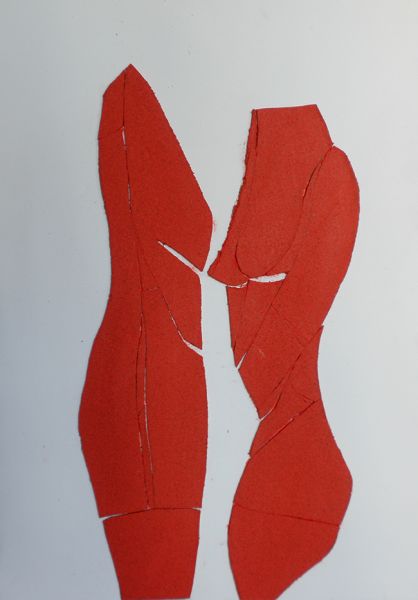
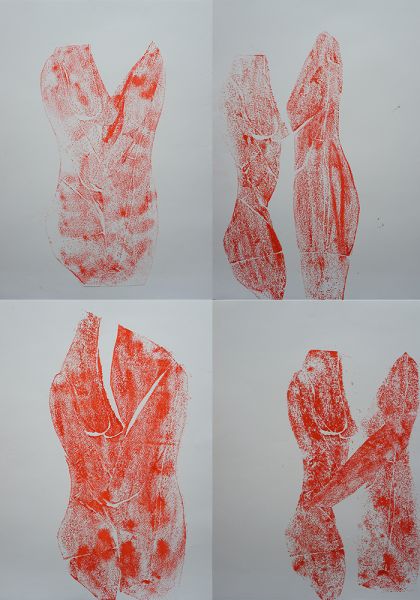
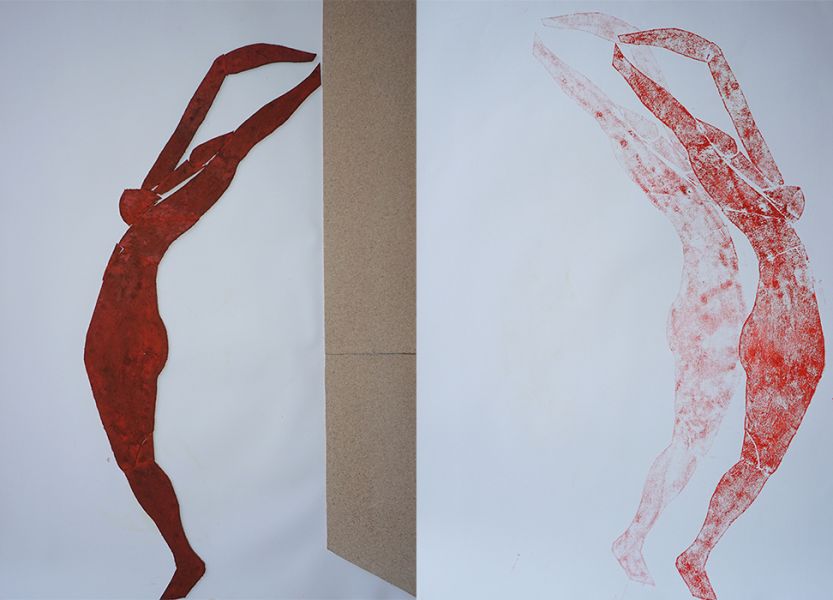
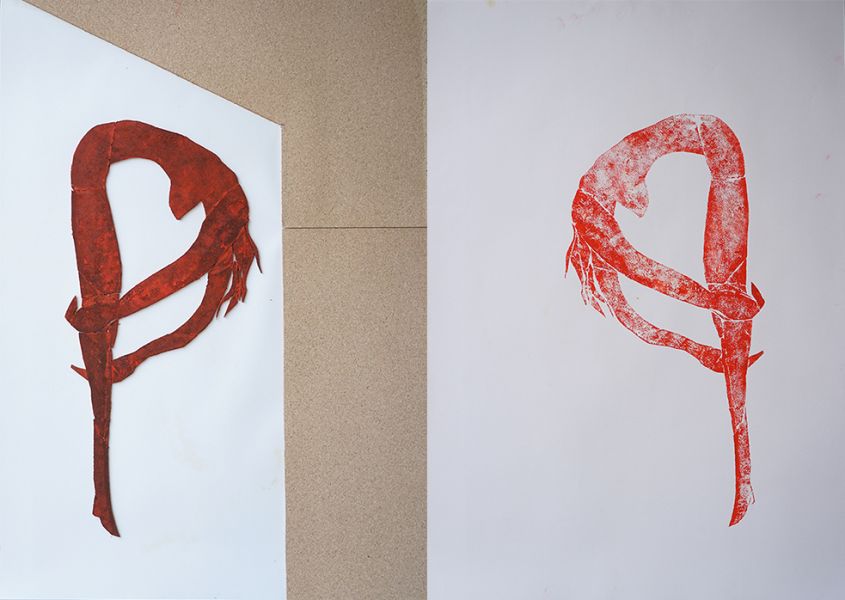
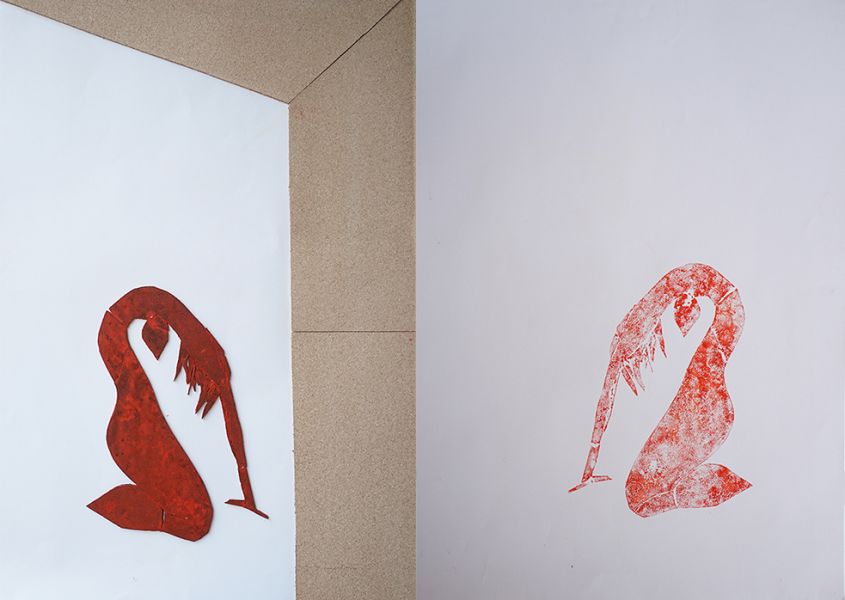
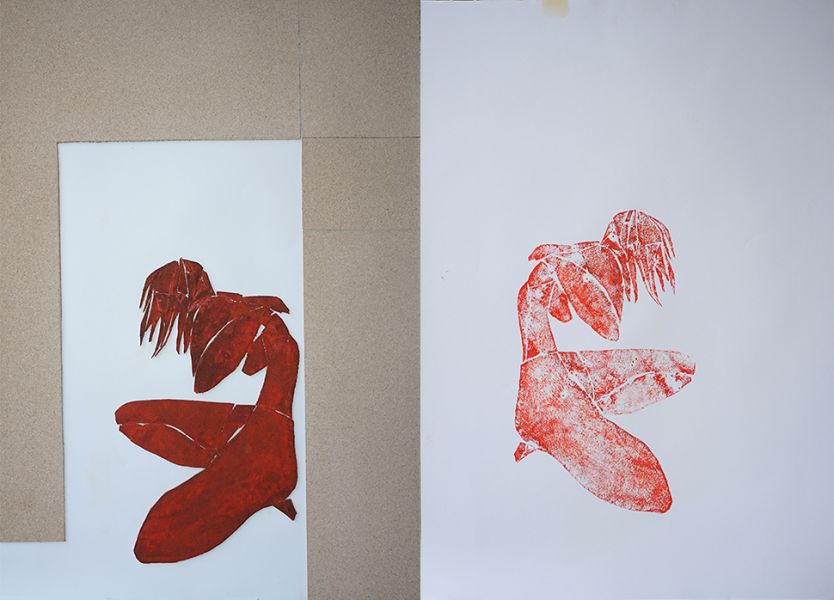
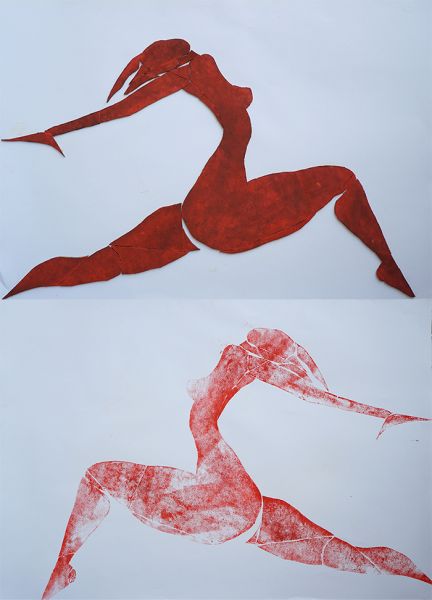
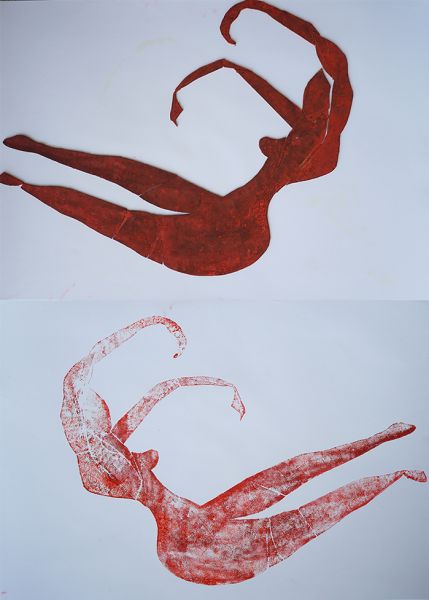
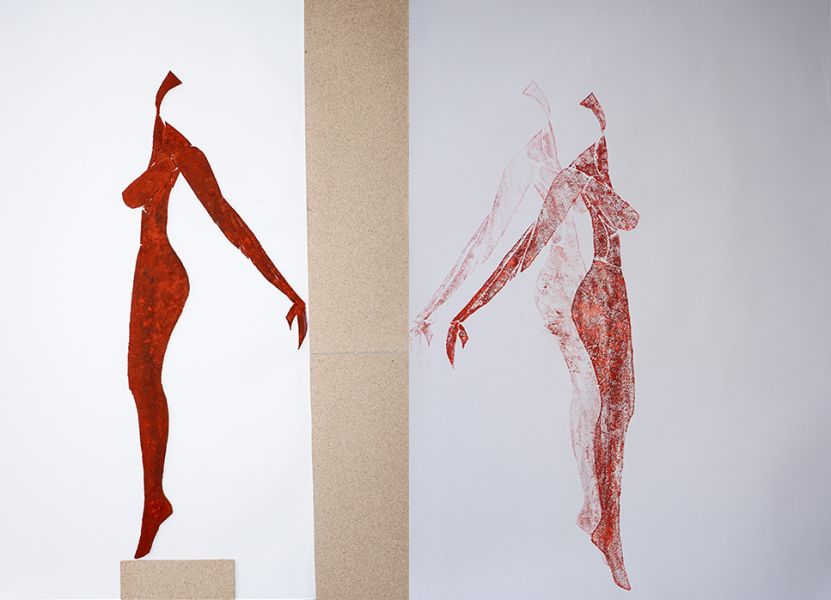
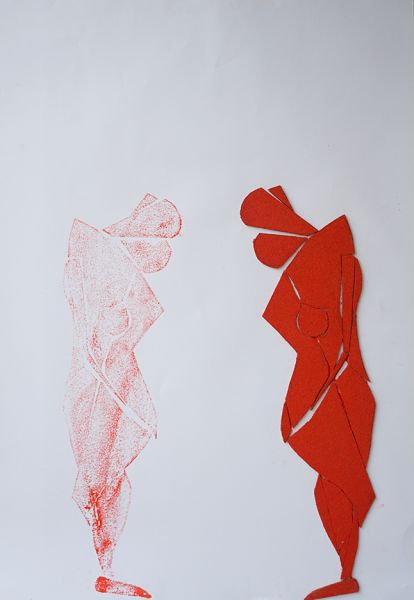
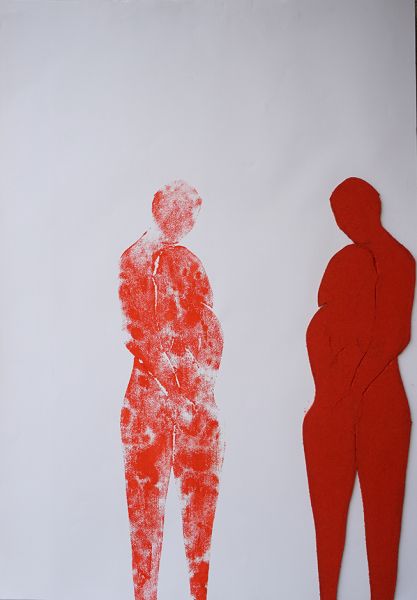

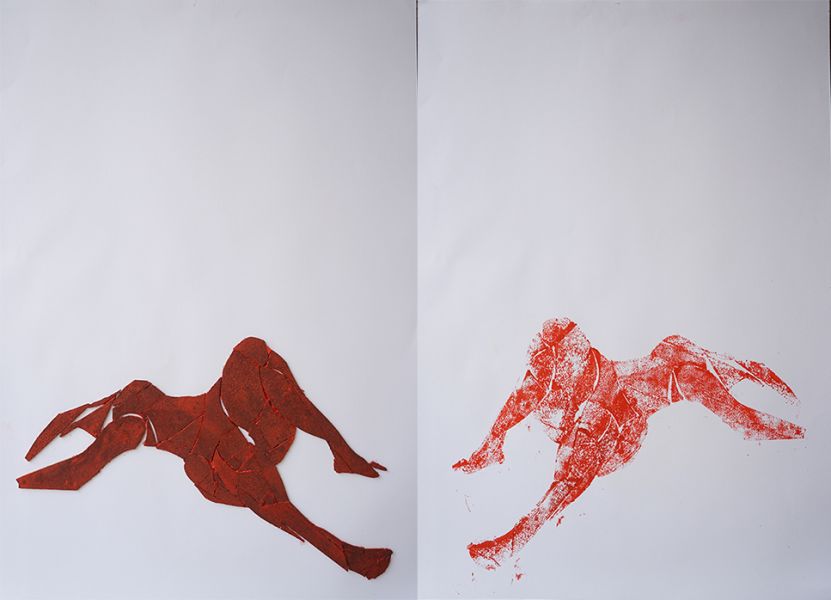
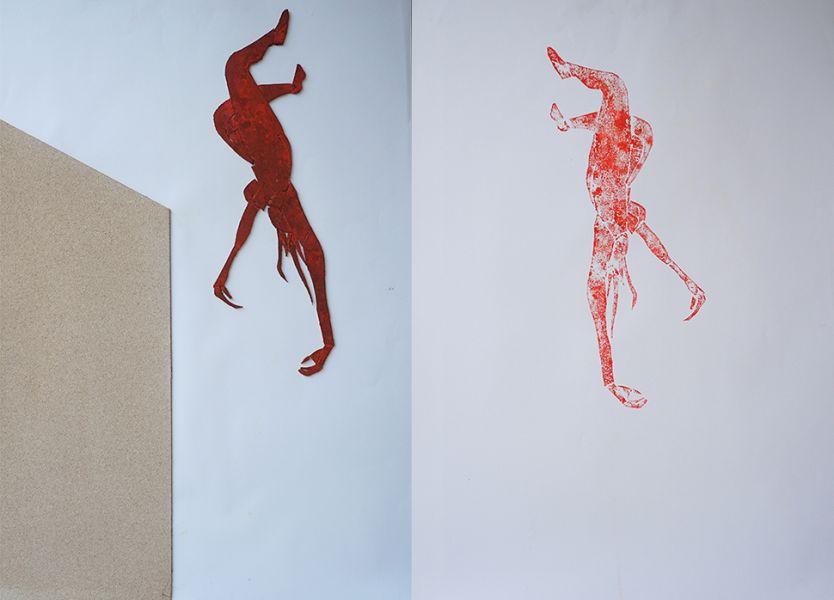
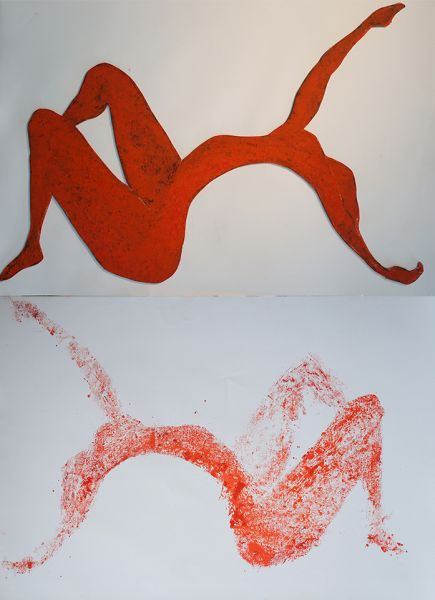

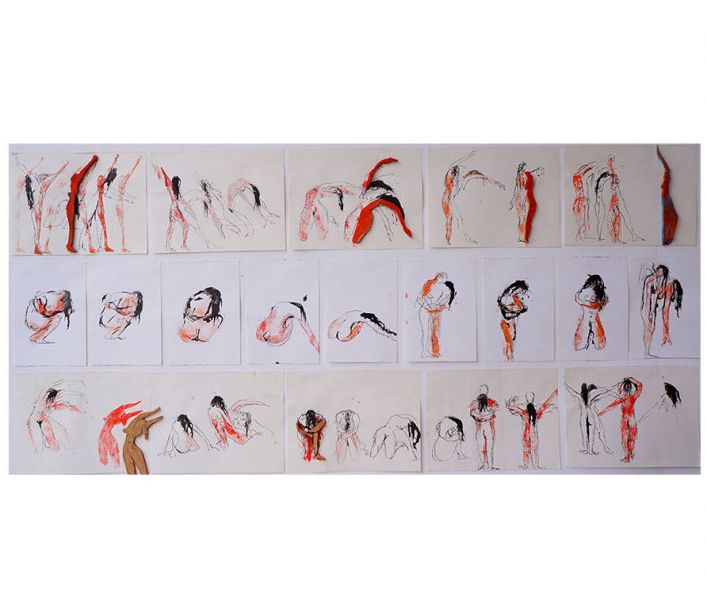
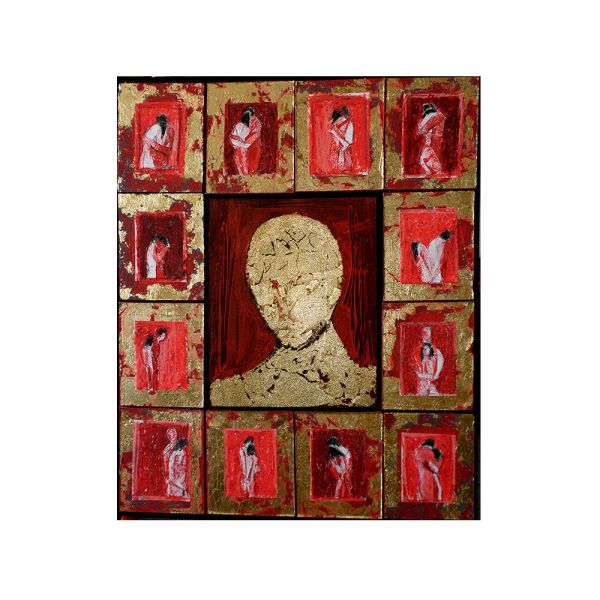

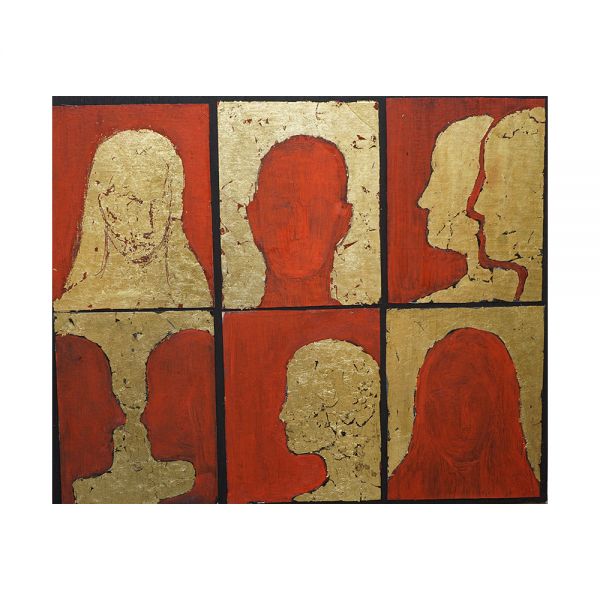
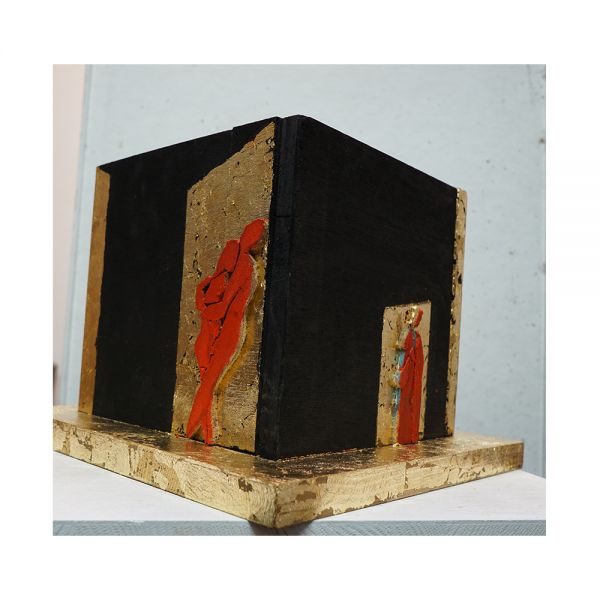
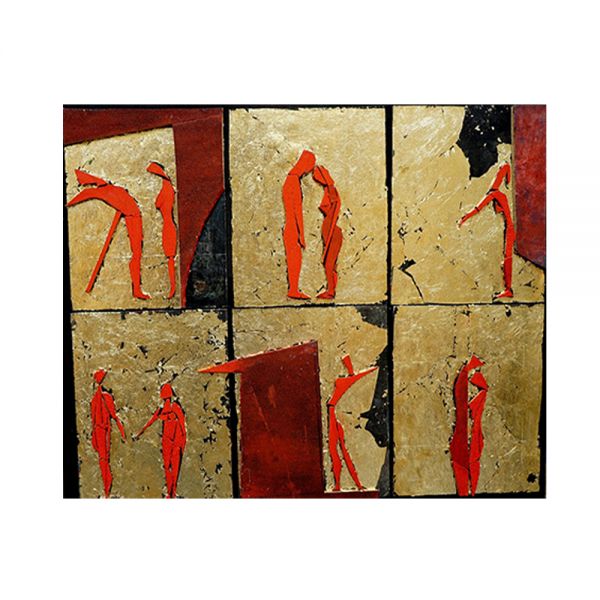
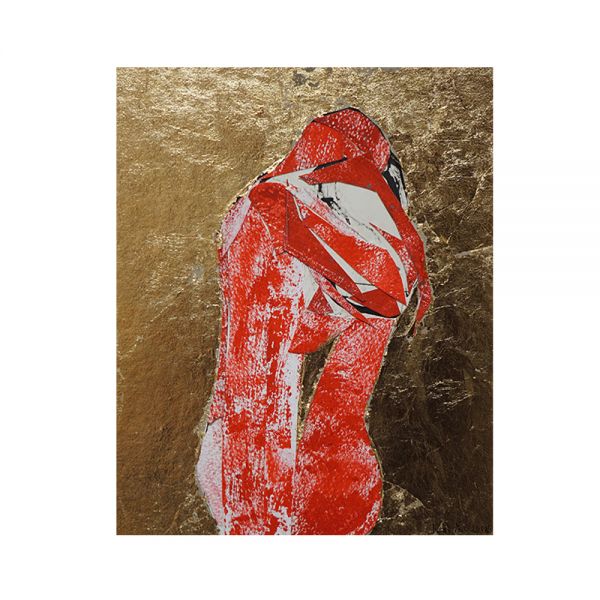
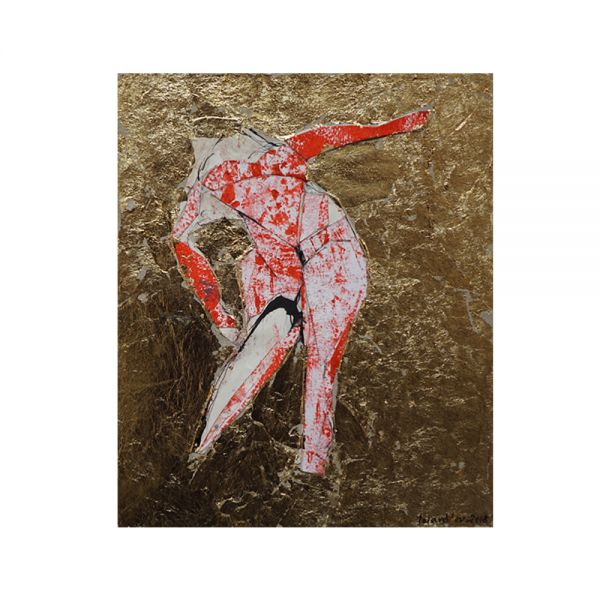
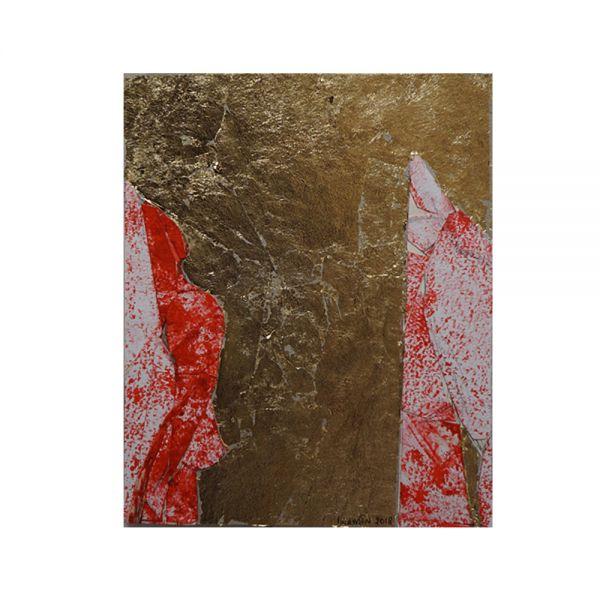
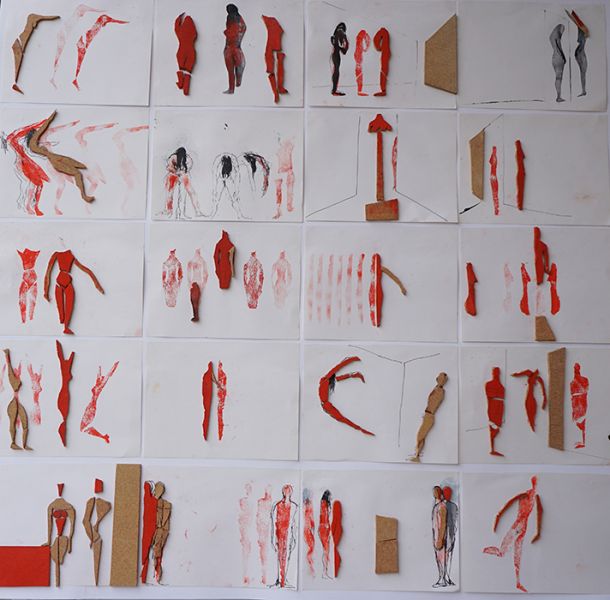
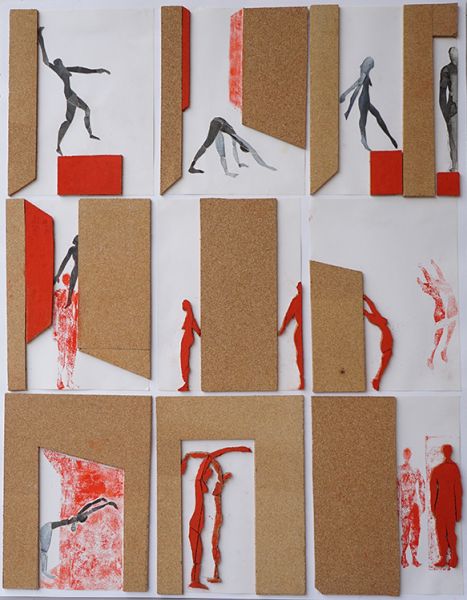
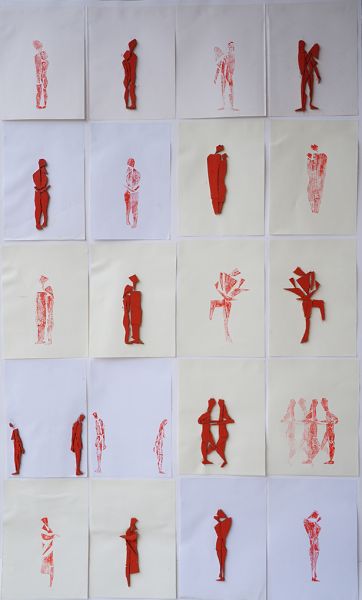
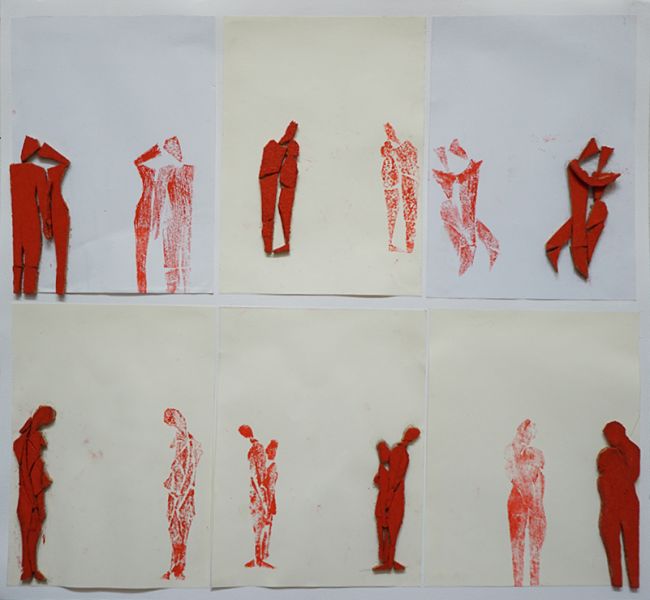
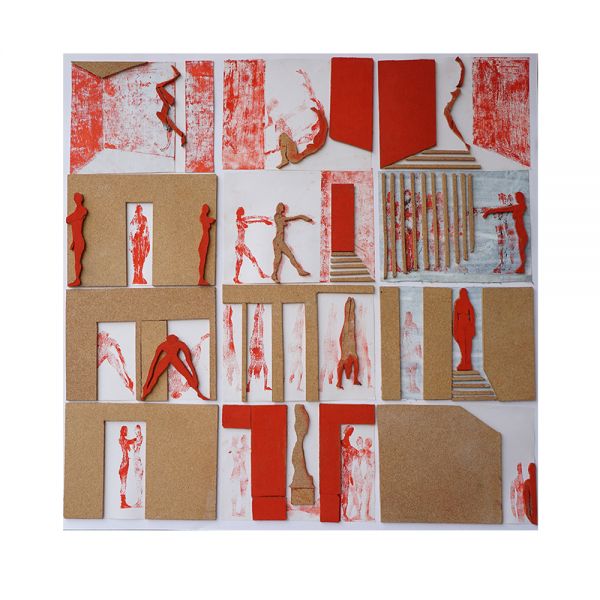
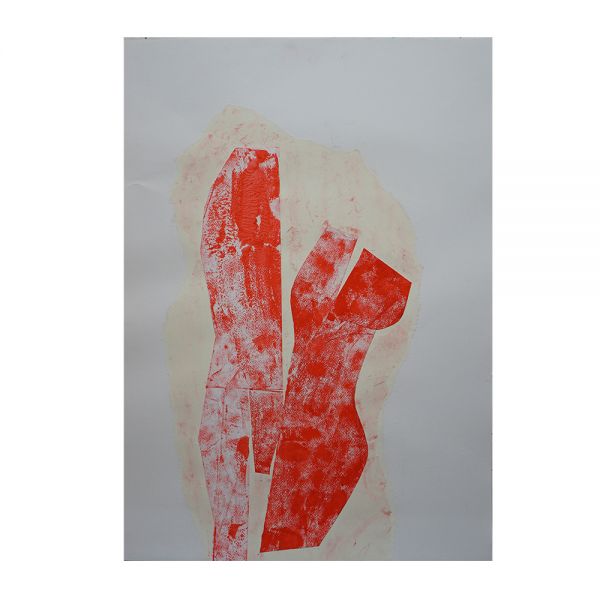
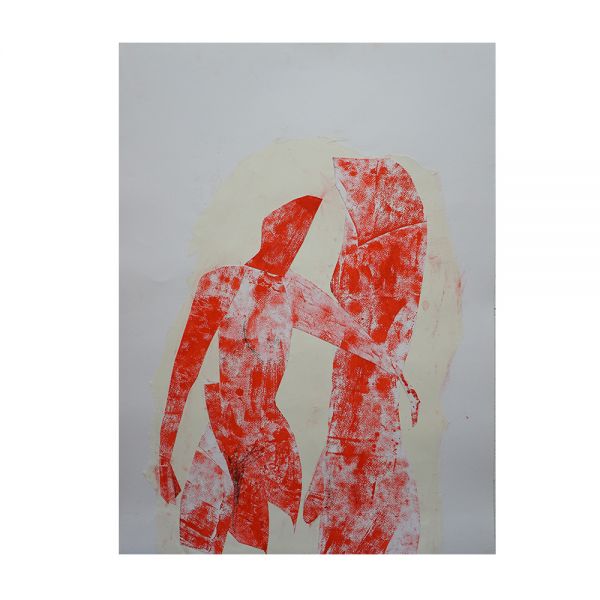
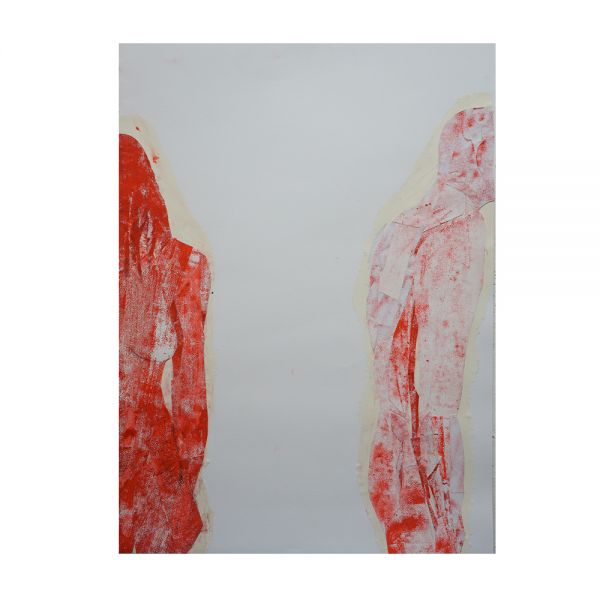
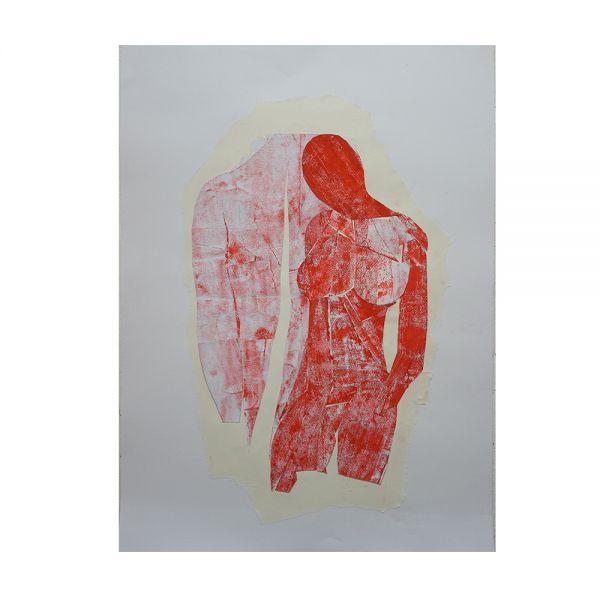
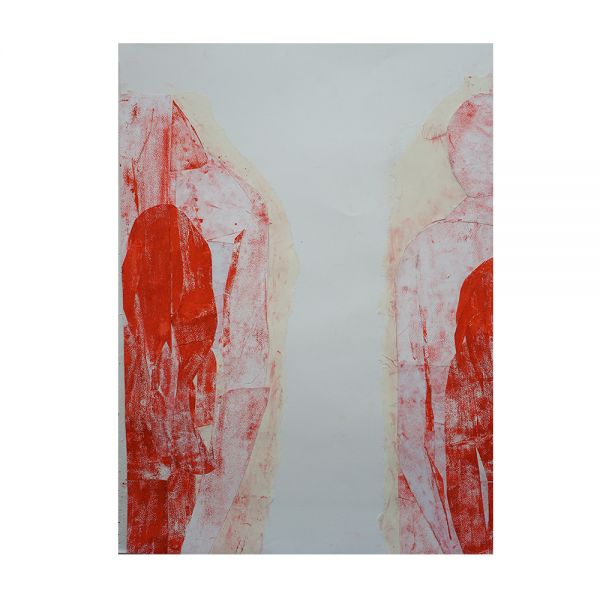
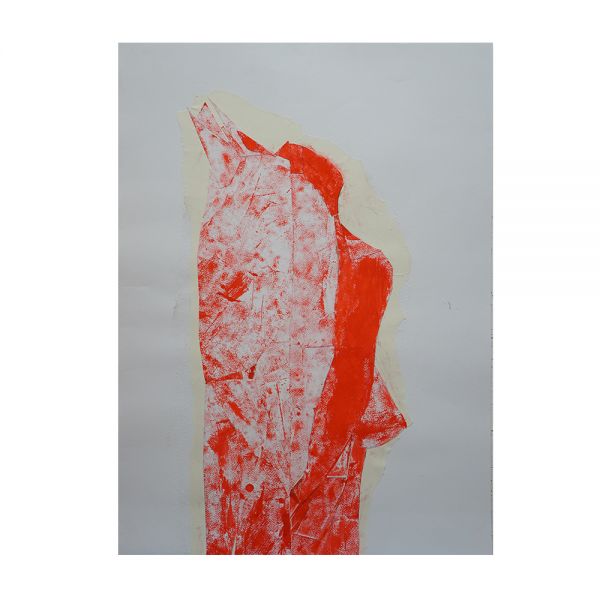
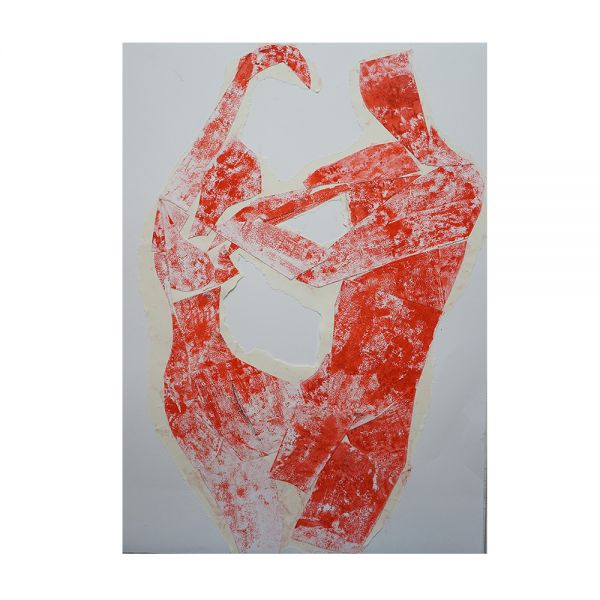

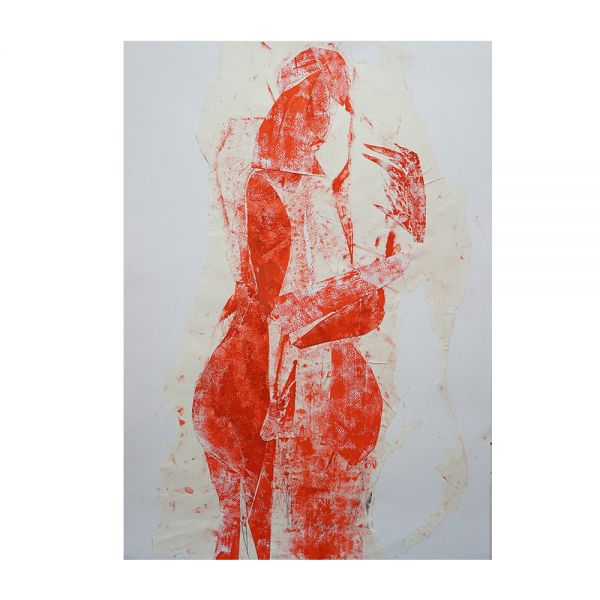
Οn Body and Soul*
The body is pulsing, shivering, hovering, balancing, thrown off and folding back, searching for contact with another body. It surrenders or prays; it’s in a perpetual move towards liaison-separation, consolidation-differentiation.
Faces are not revealed; this would be superfluous.
The artworks are figures cut in cork sheet, coloured on one side in red cadmium, creating a specular imprint on the paper. On one hand, the materiality of the cork produces a tangible image, while the stamp of the figure an intangible one. A totally controlled form and a random one. There is no drawing or painting, just texture and form. In some cases there is need for a space that would restrain the body motion, a reference to a lived into urban space.
In the thematic area of the couples, the figures are collages with paper stamped with colour.
Form and content are naked; this is about a new humanism, where the human being is the only measure. Straightforward, with no use of technology and academic references, a human being, soul and body, within the age-old history of its representations.
Mato Ioannidou
September 2018
*The title of my work is a reference to Ildiko Enienti’s film, 2017
Bodies, Forces and Rhythms
The body has become a centrepiece in the artwork of the painter Mato Ioannidou: a refrain, a visual theme she keeps returning to, every time with new ideas, insights, art material, techniques, colours and forms. Ιnthe two cycles of the Erotics, 1990 and 1995, bodies are entangled and emit energy and intensities of pleasure and pain.In the Women series, 2001 the female body is almost sculpted through the gravity that saturates its movement: bodies falling, rising, nestling, ultimately submitting to the unbearable heaviness of being. In this new cycle, it is the lightness of being that prevails: this time it is about relations between and amongst bodies, their existential forces, their movements and rhythms, their foldings and unfoldings in space/time configurations. This time it is the lightness of being that prevails: bodies, jumping, going up, flying away. Nobody knows what a body can do Spinoza famously wrote, in his major corpus, The Ethics.
Ιt is precisely this unpredictability of what bodies can do, the forces they express, the movements and the relations they make that this exhibition is about. What is at the heart of this visual concept is the impossibility of separating body/soul entanglements. Is it the soul that moves bodies, create harmonies and sets the rhythms of their relations? Or is it from the materiality of the body that the soul emerges through the energy of the forces that are incessantly released? The artist’s answer is that the body/soul dualism is both invalid and obsolete. Disjunctions are replaced by conjunctions, entanglements, assemblages. It is the bodies’ incessant movement that triggers sensations and motivates thought, raising questions and problems.
Like in all previous exhibitions of the artist the works can be considered as singularities within a unity. They all have their own details of technique, design, figuration, gesture, signs that draw the viewer’s attention, evoke memories, wound the eye, opening up horizons of other times and other spaces. At the same time however, every single piece takes up meaning through its relation with the other pieces of the visual assemblage. The works are therefore at the same time autonomous and co-dependent, beautifully expressing relational forces at the heart of the human condition.
Maria Tamboukou, Professor of Feminist Studies
University of East London, November 2018

